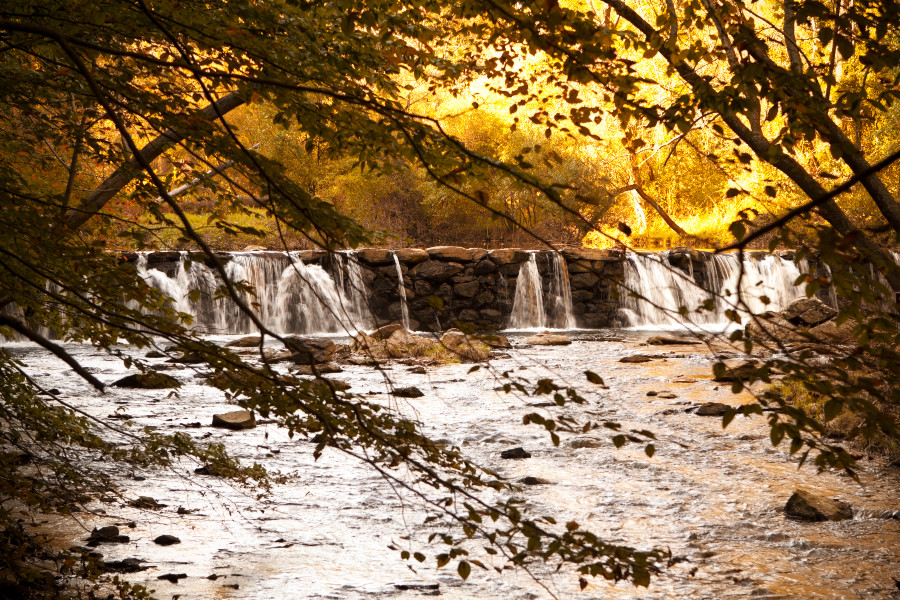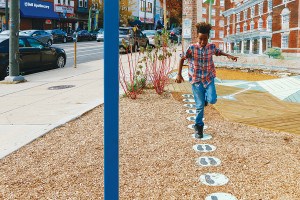Here’s Your Chance to Help Decide the Future of Pennsylvania’s Parks
Should Ridley Creek and other nearby destinations stay just the way they are — or add new facilities and activities? State park professionals are looking for opinions.

Ridley Creek State Park | Photo via Getty Images
The next 25 years of Pennsylvania state parks are being planned now — and you can weigh in on what will become of the state’s beloved natural destinations.
The Pennsylvania Department of Conservation and Natural Resources is accepting comments on Penn’s Parks for All, a preliminary proposal that includes recommendations for the future of the state’s 295,000-acre park system. It’s the DNCR’s first major park-planning effort in 25 years, following two years of surveying efforts that reached more than 16,000 residents. (The last plan, State Parks 2000 —which was published in 1992— served as the impetus for the State Parks Natural Areas program, which designated 16 areas in the state for special protection and conservation.)
Penn’s Parks for All seeks to guide state park professionals “in carrying out the important work of caring for the 121 state parks in our system.” The report details a “systemic problem” with the annual budget for the DNCR’s Bureau of State Parks. Since 1970, the state has added more than 36 parks (totaling 81,000 acres), and recorded 10 million more annual visitors — but at the same time, the total number of park staff has decreased. This makes it “increasingly difficult to manage the system in a way that provides an enjoyable and safe experience for all visitors, while also properly caring for the recreational, natural, and cultural resources that attract visitors to the parks,” according to the plan.
Penn’s Parks for All identifies key issues with the park system and offers proposals for its future based on survey responses from residents. Issues include operating the parks despite decreasing resources, visitor capacity exceeding park capabilities, ecological threats to park resources, the need for facility improvements, and changes in public recreation interests.
The DCNR’s recommendations are based on surveys on these issues. Below, we’ve listed some overarching goals and included some of the stated plans for each.
- To offer more active adventure experiences by …
- Developing at least one trail loop that’s accessible to all people in every park
- Creating more water-based recreational offerings that are “consistent with each park’s natural aesthetic and character”
- Improving accessibility for water-based recreation through canoe and kayak launch sites for people with all abilities
- Partnering with the outdoor recreation industry to build “active adventure activities”
- To enhance overnight opportunities by …
- Renovating campgrounds
- Increasing pet-friendly campsites from 37 to 50 percent of all campsites
- Increasing large, multi-family campsites from five to 50 sites statewide
- Adding 100 more rental cabins
- Increasing full-service campsites from 5 to 20 percent of all campsites, and increasing electric-only campsites from 47 to 50 percent of all campsites
- Explore building elevated camping cottages to “simulate a treehouse effect”
- To strengthen resource protection by …
- Increasing staff levels by 15 percent
- Developing a night sky management program to “enhance night sky viewing across the commonwealth”
- Converting remnant agricultural lands into pollinator meadows, grasslands and forests
- Expanding ponds, wetlands and rain gardens with park boundaries for stormwater runoff treatment
- Dedicating at least 2 percent of the bureau’s annual operating budget for land acquisitions (for conservation and more)
- Seeking compensation when private companies gain right-of-way access to state park lands
- To pay for parks and reduce park costs by …
- Eliminating buildings that are costly to maintain and have no historical significance
- Reducing energy consumption by 25 percent (with a goal of deriving 50 percent of electricity through renewable energy sources by 2030)
- Establishing annual maintenance plans for parks
- Committing fees for maintenance, repair and park improvement
- And to improve services by …
- Developing a marketing campaign to attract new and diverse park users
- Partnering with transportation authorities to improve transportation options (via bus and rail lines) and increase park access
- Expanding educational programming in parks
- Diversifying park staff through hiring programs
- Adding electric vehicle charging stations
You can read the full preliminary report right here. The final version will be published and presented to lawmakers next summer — near state budget season. The DCNR is accepting feedback until December 31st. To weigh in on the plan, visit dcnr.pa.gov/StateParks.
And to find the state park closest to you, click here.


